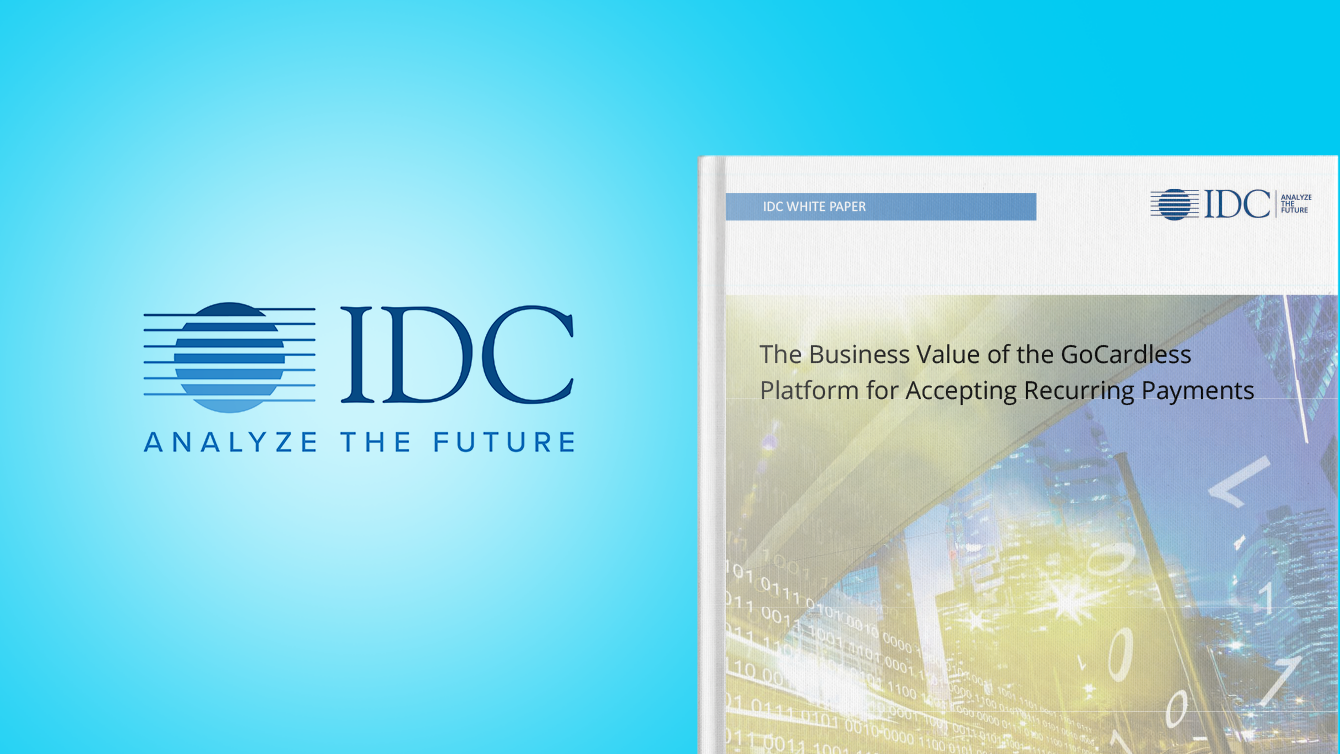IDC study demonstrates business value of GoCardless

Last editedDec 20222 min. read
IDC, the premier global provider of market intelligence, recently conducted research into the business value of the GoCardless platform. With some of the world’s leading companies - such as Amazon, Microsoft, IBM, and Salesforce - looking to IDC’s analysts for data-driven evaluations of their products, we’re excited to release the results today.
In a world shifting ever towards subscription services and away from product ownership, recurring payments are more critical than ever for businesses to get right. But taking recurring payments is swamped with problems of high cost, high maintenance, high churn, low conversion, and long payout times.
Since 2011, GoCardless has been on a mission to solve these problems. The white paper from IDC that we’re releasing today quantifies how successful we’ve been on that mission.
Conducting in-depth interviews with 10 organisations that depend on accepting recurring payments from customers as a core aspect of their business models, IDC explored several key areas:
Cost of processing payments
Time spent managing payments
Time to receive payouts
Market penetration of payment methods
Additional revenue generated
Efficiency of customer support and finance teams
If you’d like to speak with our Sales team, you can here. Otherwise, read on for a quick snapshot at the key insights from the paper.
The problems with payments
Costs to process payments are high
With businesses processing anywhere from thousands to millions of payments annually, the cost of accepting payments from customers can be significant. Credit cards - the de facto standard payment method for many subscription businesses - typically cost the merchant in the realm of 1.5% to 5% per transaction.
Payment platforms require too much human resource to manage
Similar to the popularity of credit cards for paying for subscriptions, some markets and industries see bank transfer as another de facto standard payment method, simply from historical habit of using it. This places unnecessary burden on businesses in terms of administration and reconciliation.
Not only is there this ongoing maintenance cost, but different payment platforms vary significantly in terms of the time and cost required to set up, as well as the depth and timeliness of the payment information they provide the business.
Customer payment preference varies significantly
As stated earlier, many subscription businesses see credit cards as the de facto standard payment method. Other markets and industries think the same of bank transfer. These are precedents set by businesses - not by customers. Research into payment preferences around the globe shows that accepting just one payment method is not enough. Additional research by Zuora’s Subscribed Institute shows that subscription businesses accepting more than five payment methods grow on average 21% faster than those accepting three or fewer.
Times to receive payouts are slow
Different payment platforms vary significantly in the time they take to pay out funds to their merchants. Longer payout times - that is, delayed access to funds - inhibits cash flow forecasting and harms confidence in operational plans.
The effect on your cash flow is compounded by the failure rates of each given payment method. Higher failure rates result in a weaker cash flow.
How GoCardless is solving these problems
IDC interviewed 10 organisations to quantify the business value of the GoCardless platform, particularly how it solved the above problems. The average organisation interviewed looked like this:
|
Number of transactions per year |
330,000 |
|
Total transaction volume per year |
$193.9M |
|
Average transaction size, calculated by average per organization |
$107 |
|
Number of unique customers paying on platform |
42,700 |
|
Number of countries supporting recurring payments |
5 |
Here’s a summary of the increased business value that IDC found GoCardless delivers:
56% lower overall cost per transaction accepted
59% less staff time to manage, extend payment platforms
12% more efficient customer support teams
21% more efficient finance / accounts receivable teams
44% more markets with bank debit offered to customers
47% reduced time to receive pay outs
$748,300 additional revenue